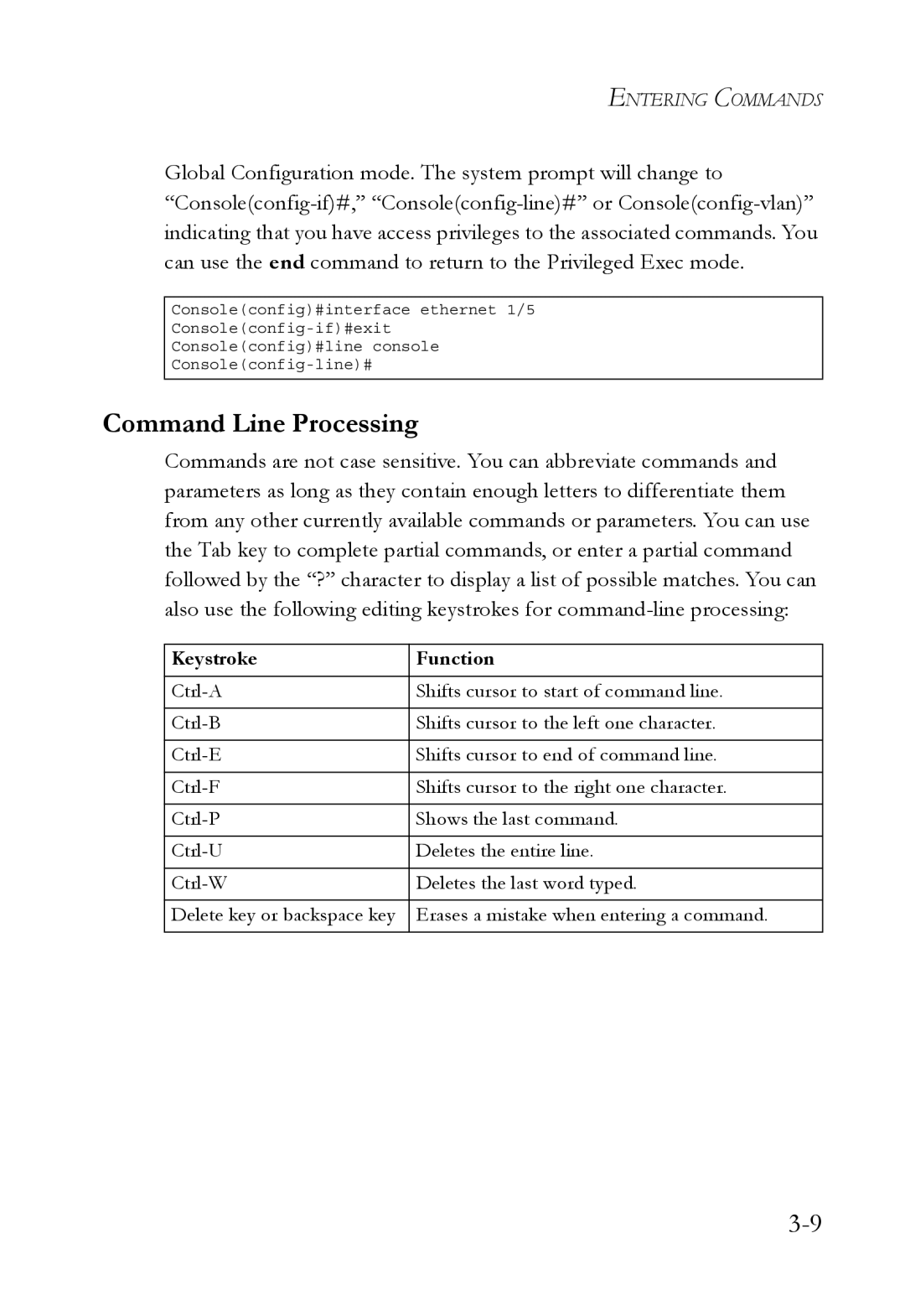ENTERING COMMANDS
Global Configuration mode. The system prompt will change to
Console(config)#interface ethernet 1/5
Console(config)#line console
Command Line Processing
Commands are not case sensitive. You can abbreviate commands and parameters as long as they contain enough letters to differentiate them from any other currently available commands or parameters. You can use the Tab key to complete partial commands, or enter a partial command followed by the “?” character to display a list of possible matches. You can also use the following editing keystrokes for
Keystroke | Function |
Shifts cursor to start of command line. | |
|
|
Shifts cursor to the left one character. | |
|
|
Shifts cursor to end of command line. | |
|
|
Shifts cursor to the right one character. | |
|
|
Shows the last command. | |
|
|
Deletes the entire line. | |
|
|
Deletes the last word typed. | |
|
|
Delete key or backspace key | Erases a mistake when entering a command. |
|
|
